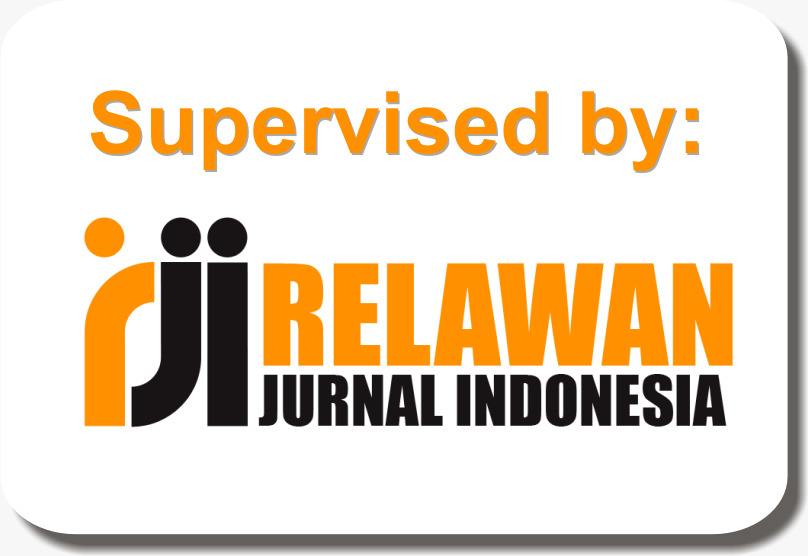TRANSFER AND PAYMENT APPLICATIONS SERVICE QUALITY: THE MODIFIED E-SERVQUAL AND IMPORTANCE-PERFORMANCE ANALYSIS
Abstract
Keywords
Full Text:
PDFReferences
F. Hendro Basuki and H. Husein, ÔÇťFinancial Technology Swot Analysis In The Banking World In The City Of Ambon (Survey of Banks in Ambon City),ÔÇŁ MANIS : Journal of Management and Business, vol. Vol 1 No 2 (2018):, Jan. 2018, [Online]. Available: https://ojs3.unpatti.ac.id/index.php/manis/
L. Nugroho, ÔÇťFinancial Technology Development (Fintech in Indonesia)," 2022.
B. A. Prismawan, F. Informatika, and M. Al Makky, ÔÇťThe Influence Of Perceptions Of Security, Perceptions Of Privacy, And Perceptions Of Trust On Interest In Using The Flip.Id Application Using Extended Technology Acceptance Model (Case Study Of Flip Users In Ban-dung City),ÔÇŁ Bandung, 2023.
S. A. Raza, A. Umer, M. A. Qureshi, and A. S. Dahri, ÔÇťInternet banking service quality, e-customer satisfaction and loyalty: the modified e-SERVQUAL model,ÔÇŁ TQM Journal, vol. 32, no. 6, pp. 1443ÔÇô1466, Nov. 2020, doi: 10.1108/TQM-02-2020-0019.
J. A. Martilla and J. C. James, ÔÇťImportance Performance Analysis,ÔÇŁ J Mark, vol. 41, no. 1, pp. 77ÔÇô79, 1977.
A. Wang, Q. Zhang, S. Zhao, X. Lu, and Z. Peng, ÔÇťA review-driven customer preference measurement model for product improvement: sentiment-based importanceÔÇôperformance analysis,ÔÇŁ Information Systems and e-Business Management, vol. 18, no. 1, pp. 61ÔÇô88, March. 2020, doi: 10.1007/s10257-020-00463-7.
I. Sasono et al., ÔÇťThe Impact of E-Service Quality and Satisfaction on Customer Loyalty: Empirical Evidence from Internet Banking Us-ers in Indonesia,ÔÇŁ Journal of Asian Finance, Economics and Business, vol. 8, no. 4, pp. 465ÔÇô473, 2021, doi: 10.13106/jafeb.2021.vol8.no4.0465.
N. Hayani and S. Alsukri, ÔÇťDimensions of E-Servqual and Their Impact on E-Satisfaction of Mobile Banking Services,ÔÇŁ Scientific Journal of Islamic Economics, vol. 7, no. 2, June. 2021, doi: 10.29040/jiei.v7i2.2275.
I. G. A. I. S. Maharani and R. G. Utomo, ÔÇťDigital Banking Service Quality: The Modified E-Servqual Model & Importance-Performance Analysis (IPA),ÔÇŁ in 2023 International Conference on Data Science and Its Applications, ICoDSA 2023, Institute of Electrical and Elec-tronics Engineers Inc., 2023, pp. 145ÔÇô150. doi: 10.1109/ICoDSA58501.2023.10277373.
A. T. Liem, I. Reghuella Chrisanti, A. Sandag, D. Divakara, and P. Purwadaria, ÔÇťAnalysis of Customer Satisfaction with Mobile Banking Services PT. Bank XYZ Airmadidi Area Using E-Servqual Customer SatisfactionÔÇŁ Cogito Smart Journal |, vol. 6, no. 2, 2020.
E. Saputri and D. Syamsuar, ÔÇťEvaluation Of User Satisfaction Of Myindihome Mobile Application Services Based On A Combination Of Servqual Methods And Webqual Methods,ÔÇŁ Teknokompak Journal, vol. 14, no. 1, p. 27, 2020, Accessed: Nov. 16, 2023. [Online]. Available: https://ejurnal.teknokrat.ac.id/index.php/teknokompak/article/view/525/366
D. Pranitasari and A. N. Sidqi, ÔÇťShopee Electronic Customer Satisfaction Analysis using E-Service Quality and Cartesian Methods,ÔÇŁ Journal of Accounting and Management, vol. 18, no. 02, pp. 12ÔÇô31, Oct. 2021, doi: 10.36406/jam.v18i02.438.
D. Aprilliani, R. G. Utomo, and M. Al Makky, ÔÇťAnalysis of Online Train Ticket Reservation Service using Modified E-Service Quality,ÔÇŁ in 2023 International Conference on Data Science and Its Applications, ICoDSA 2023, Institute of Electrical and Electronics Engineers Inc., 2023, pp. 163ÔÇô168. doi: 10.1109/ICoDSA58501.2023.10276701.
M. F. Rafi, H. H. Nuha, and M. Al Makky, ÔÇťAnalysis of User Satisfaction Levels in the My Tel-U Application Using the e-SERVQUAL and Importance Performance Analysis (IPA) Methods,ÔÇŁ in International Conference on ICT Convergence, IEEE Computer Society, 2023, pp. 377ÔÇô382. doi: 10.1109/ICoICT58202.2023.10262499.
M. Ansori, ÔÇťDevelopment and Impact of Financial Technology (FinTech) on the Sharia Financial Industry in Central Java,ÔÇŁ Wahana Is-lamika: Journal of Islamic Studies, pp. 32ÔÇô45, 2019.
M. G. Hafiyanda and O. O. Sharif, ÔÇťThe Influence of E-Service Quality Dimensions on E-Customer Satisfaction and the Impact on E-Customer Loyalty for the Livin'by Mandiri Mobile Banking Application. The Effect Of E-Service Quality Dimensions On E-Customer Satisfaction And Their Impact On E-Customer Loyalty On Livin'by Mandiri Mobile Banking Application,ÔÇŁ 2023.
Z. Fadilla, M. Ketut Ngurah Ardiawan, M. Eka Sari Karimuddin Abdullah, M. Jannah Ummul Aiman, and S. Hasda, Quantitative Re-search Methodology. [Online]. Available: http://penerbitzaini.com
P. Rita, T. Oliveira, and A. Farisa, ÔÇťThe impact of e-service quality and customer satisfaction on customer behavior in online shopping,ÔÇŁ Heliyon, vol. 5, no. 10, Oct. 2019, doi: 10.1016/j.heliyon.2019.e02690.
B. B. Holloway and S. E. Beatty, ÔÇťSatisfiers and dissatisfiers in the online environment: A critical incident assessment,ÔÇŁ J Serv Res, vol. 10, no. 4, pp. 347ÔÇô364, May 2008, doi: 10.1177/1094670508314266.
S. Khatoon, X. Zhengliang, and H. Hussain, ÔÇťThe Mediating Effect of Customer Satisfaction on the Relationship Between Electronic Banking Service Quality and Customer Purchase Intention: Evidence From the Qatar Banking Sector,ÔÇŁ Sage Open, vol. 10, no. 2, Apr. 2020, doi: 10.1177/2158244020935887.
DOI: https://doi.org/10.29100/jipi.v10i3.6423
Refbacks
- There are currently no refbacks.

This work is licensed under a Creative Commons Attribution-ShareAlike 4.0 International License.
Website :áhttps://jurnal.stkippgritulungagung.ac.id/index.php/jipi/index
Emailá: jipi@stkippgritulungagung.ac.id

This work is licensed under a Creative Commons Attribution-ShareAlike 4.0 International License.




